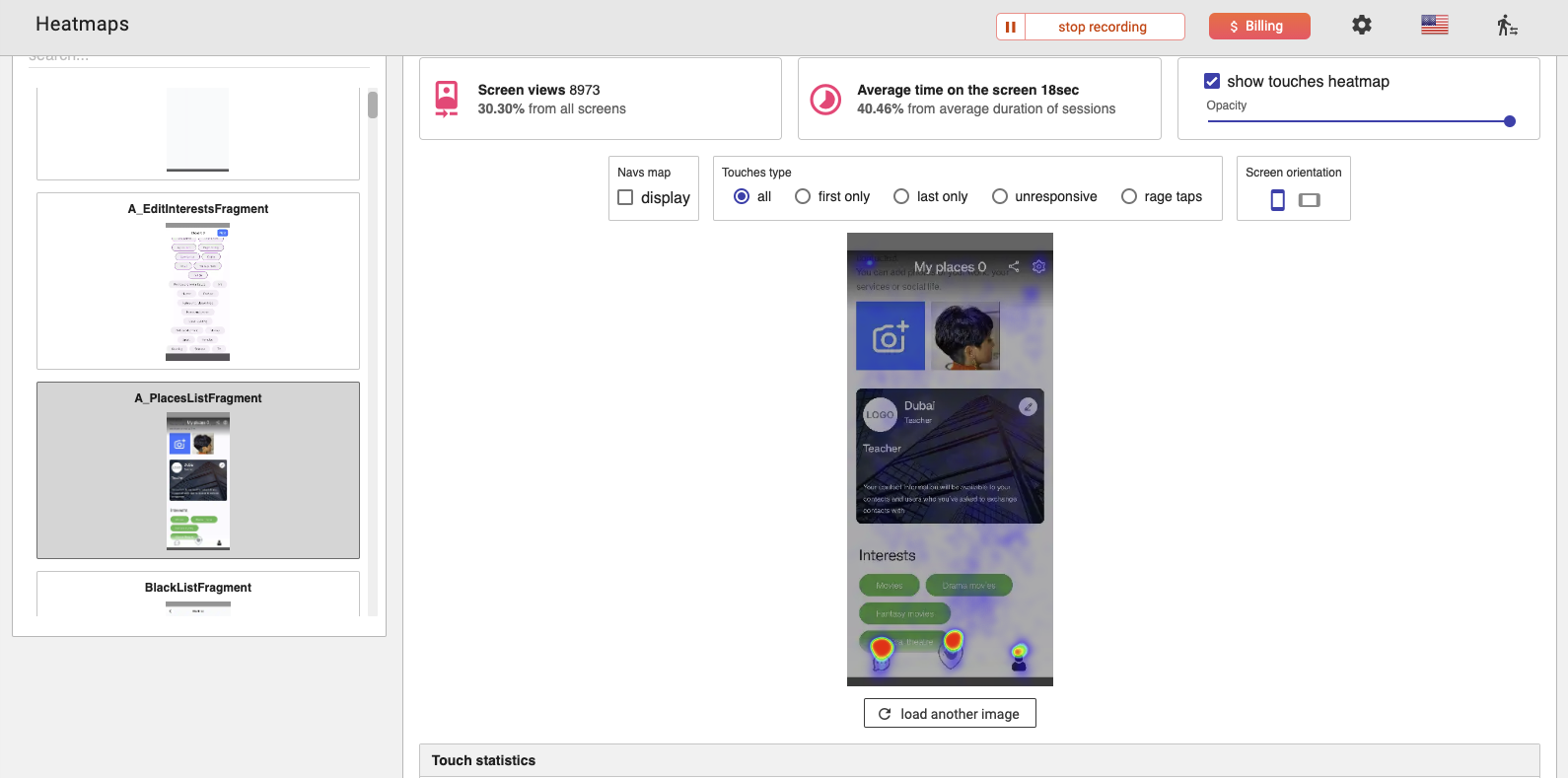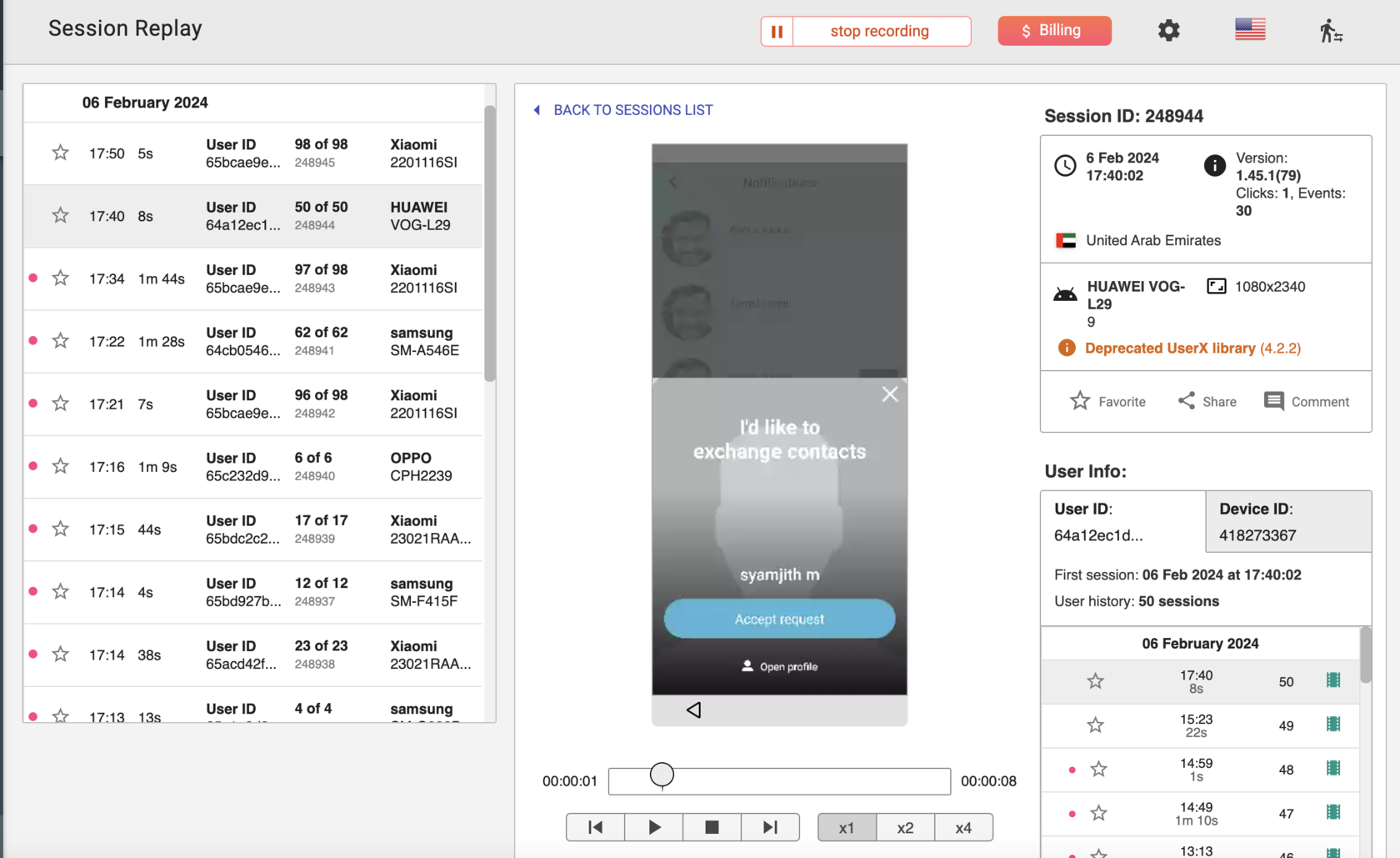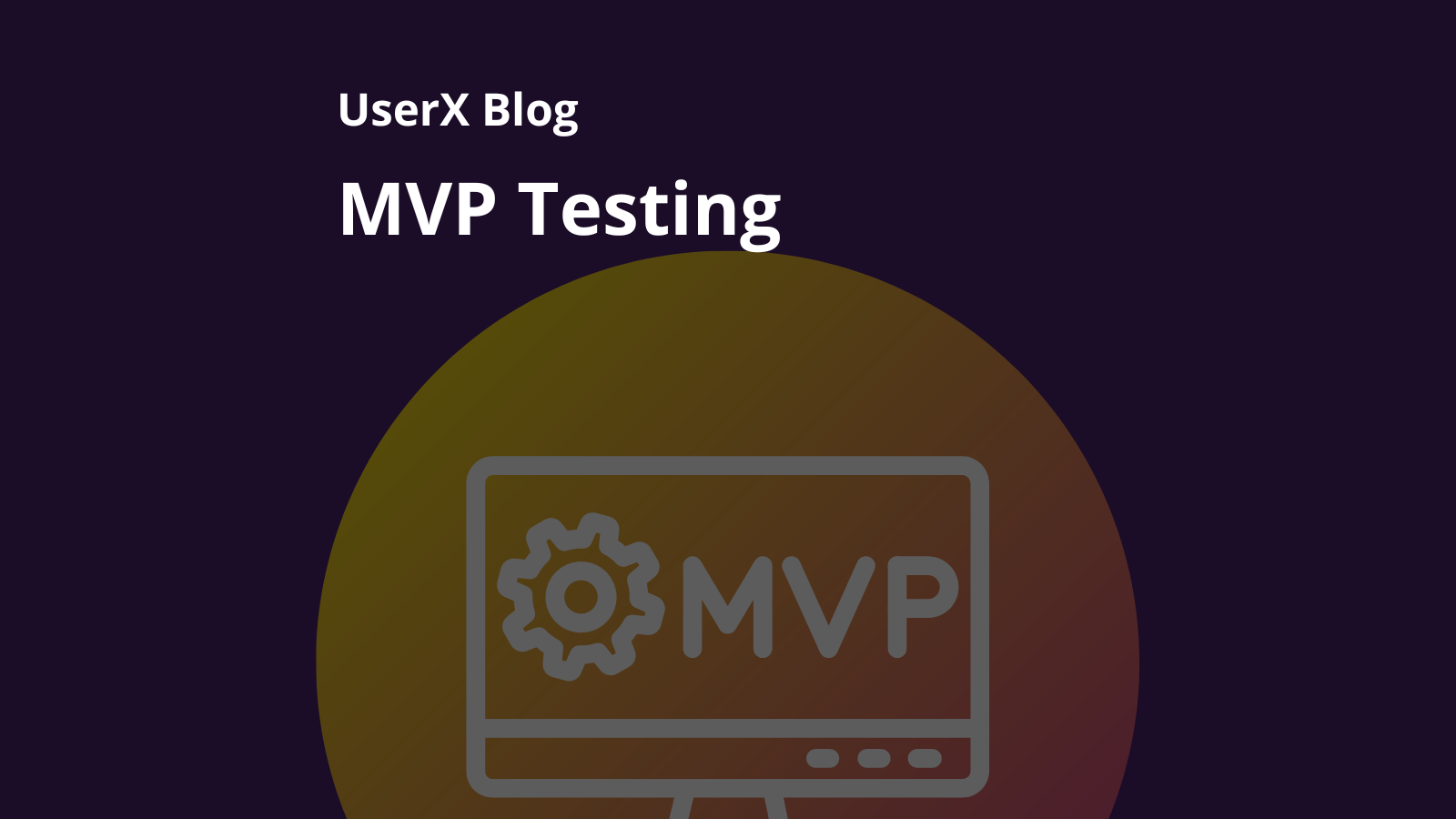MVP testing for mobile apps refers to the process of creating and evaluating a Minimum Viable Product (MVP) for a mobile application. The MVP is the most basic version of the app that still allows the product team to collect the maximum amount of validated learnings about customers with the least effort. The primary goal of MVP testing is to understand whether the app idea has real market demand and how potential users react to its core functionalities without fully developing the app with all intended features.
The MVP testing process often involves the following steps:
- Identifying the Core Value Proposition: Determine the most critical function or feature that solves a problem or fulfills a need for your target audience. This feature should be the focus of your MVP.
- Building the MVP: Develop the MVP with minimal features necessary to test the core value proposition. The aim is to create a functional product that can be quickly released to gather user feedback.
- Launching the MVP: Release the MVP to a select group of users or a specific market segment. The launch can be limited to ensure that feedback is manageable and targeted.
- Collecting and Analyzing Feedback: Gather data on how users are interacting with the app, what features they like or dislike, and any issues they encounter. This can be done through direct user feedback, surveys, interviews, and usage analytics.
- Iterating Based on Feedback: Use the insights gained from user feedback to make informed decisions about product development. This may involve adding new features, removing or modifying existing ones, or even pivoting the app’s direction entirely.
MVP testing is a critical phase in the mobile app development process as it helps validate the app idea, reduces the risk of large-scale failure, and ensures that development resources are invested in a product that meets the needs of its target market.
Providing MVP (Minimum Viable Product) testing for apps involves a strategic approach to validate your app idea, understand your target audience's needs, and refine the app based on real user feedback before a full-scale launch. Here’s a step-by-step guide to effectively conduct MVP testing for your mobile app:
1. Define Your Objective and Target Audience
- Objective: Clearly define what you want to achieve with your app. This could be solving a specific problem, fulfilling a need, or offering a unique value proposition.
- Target Audience: Identify who your app is for. Understanding your target audience’s demographics, behaviors, and needs is crucial for creating a product that resonates with them.
2. Identify Key Features and Functionality
- Core Features: Determine the essential features that address the core value proposition of your app. These features should solve the primary problem for your target audience.
- Prioritize: Prioritize features based on their importance to your app’s value proposition and the feasibility of development.
3. Develop Your MVP
- Build: Develop the MVP focusing only on the core features identified earlier. The goal is to build a product that is functional enough to test the primary assumptions about your app.
- Design: Ensure the user interface is intuitive and user-friendly, even if it's not feature-complete. The design should facilitate easy navigation through the core features.
4. Choose the Right Testing Methods
- Beta Testing: Release your MVP to a select group of early adopters who match your target audience. Platforms like TestFlight (for iOS) or Google Play Console’s beta testing feature (for Android) can facilitate this process.
- A/B Testing: If you have hypotheses about different features or designs, A/B testing can help you understand user preferences.
5. Collect and Analyze Feedback
- User Feedback: Use surveys, interviews, and direct observations to gather feedback from your testers. Focus on understanding how users interact with your app, what features they find valuable, and any pain points they experience.
- Analytics: Implement analytics tools to collect data on user behavior within your app. Metrics such as retention rate, daily active users, and feature usage can provide insights into how well your MVP is performing.
Leverage UserX for MVP testing by tapping into its analytics capabilities to scrutinize how users interact with your app. Utilize session recordings to observe real user experiences, heatmaps to see where users tap most, and conversion funnels to identify where they drop off.

6. Iterate Based on Insights
- Analyze Data: Review the feedback and analytics data to identify trends, issues, and opportunities for improvement.
- Iterate: Make informed decisions to refine, add, or remove features. This step may involve several iterations of development and testing to align the product more closely with user needs.
7. Plan for Scaling
- Prepare for Growth: Once your MVP has been validated and refined based on user feedback, start planning for additional features, scaling infrastructure, and broader market launch strategies.
8. Continuous Learning and Improvement
- Learn and Adapt: MVP testing is an ongoing process. Even after a successful launch, continue to gather user feedback, monitor performance, and iterate on your product to meet evolving user needs and market demands.
By following these steps, you can effectively conduct MVP testing for your app, ensuring that you invest resources wisely, reduce risks associated with product development, and increase the likelihood of launching a successful app that meets the needs of your target audience.
MVP validation for mobile apps is a critical process in the early stages of app development, aimed at verifying that the Minimum Viable Product (MVP) — the most basic version of the app that is still functional — addresses a real need in the market and has the potential for success. This process involves introducing the MVP to the target audience to gather feedback on its core functionalities, usability, and overall appeal. The primary objectives of MVP validation for mobile apps include:
- Market Validation: To confirm that there is a genuine demand for the app and that it solves a problem or fulfills a need for the target audience. This helps in determining whether the app idea is worth pursuing further.
- Product-Market Fit: To assess whether the app meets the expectations of its intended users and if it fits well within the existing market. Achieving a good product-market fit indicates that the app has a higher chance of being adopted and used regularly by its target audience.
- Feedback Collection: To gather insights directly from early users regarding the app's features, user interface, user experience, and any issues or bugs. This feedback is invaluable for identifying what works, what doesn't, and what could be improved.
- Iterative Improvement: To use the feedback and data collected from early users to make informed decisions about future development. This might involve adding new features, refining existing ones, or pivoting the app’s direction entirely.
- Resource Allocation: To ensure that time, effort, and financial resources are invested wisely in developing features and aspects of the app that truly matter to users, thereby minimizing waste on less important elements.
- Risk Reduction: By validating the app early in its development cycle, the risk of building a product that fails to meet market needs is significantly reduced. This approach helps in avoiding the costly mistake of fully developing an app only to find little or no market interest.
MVP validation is typically achieved through a combination of user feedback, analytics, and performance metrics collected during the MVP phase. This information helps developers and stakeholders make data-driven decisions about whether to proceed with further development, pivot the app’s concept, or, in some cases, abandon the project if the validation process indicates insufficient market interest.
MVP (Minimum Viable Product) testing techniques for mobile apps are crucial for validating your app idea, ensuring it meets the target audience's needs, and refining it based on user feedback before a full-scale launch. Here are some of the main MVP testing techniques used for mobile apps:
A/B Testing
- Description: Present two versions of your app (or app elements, such as features, designs, or workflows) to different segments of your audience to see which one performs better.
- Purpose: To optimize app design, features, and user experience based on empirical data.
Beta Testing
- Description: Release the MVP to a select group of users who are part of your target market. These users use the app in real-world conditions and provide feedback.
- Purpose: To identify bugs, gather insights on user experience, and understand the app's value in practical use.
Usability Testing
- Description: Conduct tests with real users focusing on the app's ease of use, interface design, and overall user experience. This can be done in controlled environments or remotely.
- Purpose: To observe how users interact with the app and identify any usability issues that need to be addressed.
Focus Groups
- Description: Bring together a group of potential users to discuss the app, its features, and their expectations. This technique allows for deep dives into users' thoughts and preferences.
- Purpose: To gain qualitative insights into the app's appeal and how it fits into the target audience's needs.
Surveys and Feedback Forms
- Description: After users have interacted with the app, provide them with surveys or feedback forms to collect their opinions on various aspects of the app.
- Purpose: To collect quantitative and qualitative feedback on the app from a broader audience.
Analytics and Performance Metrics
- Description: Implement analytics tools within the app to collect data on user behavior, feature usage, session lengths, retention rates, and more.
- Purpose: To gain insights into how users are interacting with the app and identify patterns that indicate what features are most valued.

Pilot Testing
- Description: Launch the app to a small, controlled segment of the target market under real conditions, observing its usage and performance.
- Purpose: To test the app in a real-market scenario, but on a smaller scale, to mitigate risks.
Crowdfunding Campaigns
- Description: Use crowdfunding platforms to present your app idea and seek funding from potential users and supporters.
- Purpose: To validate the market demand for your app and secure initial funding based on the concept's appeal.
Each of these techniques serves a different purpose and can provide valuable insights at various stages of the MVP development and testing process. By effectively applying these techniques, app developers and entrepreneurs can significantly improve their chances of creating a successful mobile app that meets the needs and expectations of their target audience.
Book a demo and try UserX for free!
Choosing the right MVP testing technique for your mobile app involves considering several factors about your app, target audience, and the specific insights you're aiming to gain. Here's a guide to help you select the most appropriate testing technique:
1. Define Your Goals
- Objective Clarity: Understand what you want to achieve with your MVP testing. Are you testing market demand, usability, specific features, or overall concept appeal?
- Key Metrics: Determine the key metrics you'll measure, such as user engagement, retention, conversion rates, or feature popularity.
2. Understand Your Target Audience
- Demographics: Know who your users are. Different demographics may prefer different types of interaction or feedback mechanisms.
- Access and Availability: Consider how easily you can reach your target audience for testing. This could influence whether you choose online surveys, in-person focus groups, or another method.
3. Evaluate Your App’s Stage of Development
- Pre-Development: If your app is still in the idea phase, landing page testing or crowdfunding campaigns can validate interest before any development starts.
- Early Development: Usability testing and focus groups can provide qualitative insights into user experience and design preferences.
- Near Completion: Beta testing and A/B testing are more suitable for apps that are functional but not fully polished, allowing you to gather feedback on real usage.
4. Resource Availability
- Budget: Some testing methods, like focus groups or in-depth usability studies, require more resources. Consider what you can afford.
- Time: Evaluate how much time you have for testing. Some methods provide quick feedback, while others, like beta testing, require a longer commitment.
- Technical Resources: The complexity of setting up certain tests (e.g., A/B testing mechanisms or analytics) might require specific technical resources.
5. Desired Feedback Type
- Quantitative vs. Qualitative: Decide if you need numerical data to analyze trends (quantitative) or detailed insights into user behaviors and opinions (qualitative). Surveys and analytics are great for quantitative data, whereas focus groups and interviews can provide qualitative insights.
6. Risk Management
- Scope of Release: Consider how widely you want to release your MVP. Pilot testing allows for controlled, smaller-scale testing, while beta testing can expose your app to a broader audience.
- Feedback Management: Ensure you have the means to manage and act on the feedback you receive. Overwhelming feedback without the capacity to analyze and implement changes can be counterproductive.
7. Iterative Development Approach
- Flexibility for Changes: Choose a testing method that aligns with your ability to make iterative changes based on feedback. The goal is to learn and improve rapidly.
8. Competitive Analysis
- Market Positioning: Look at how competitors are testing their apps. Gaining insights into their methods can offer guidance on what might work for your app, considering the market dynamics.
By considering these factors, you can select a testing technique that not only aligns with your app’s current stage and goals but also effectively engages your target audience, provides actionable insights, and fits within your resource constraints. Remember, testing is an iterative process; you might start with one technique and evolve your strategy as your app develops and new insights emerge.
MVP testing is an essential step in mobile app development, enabling creators to validate their product's market fit and user appeal with minimal investment. Through techniques like beta testing, A/B testing, and analytics, developers can gather valuable feedback to refine their app. UserX emerges as a convenient tool in this process, offering in-depth analytics on user behavior and app performance. Its two-week free trial period allows developers to explore these benefits without initial costs, making MVP testing more accessible and informed.



